- Clone
- QA19A16 (See other available formats)
- Regulatory Status
- RUO
- Other Names
- GHI/61, M130, RM3/1, p155, Hemoglobin/Haptoglobin Complex Receptor, macrophage-associated antigen, ED2(rat)
- Isotype
- Mouse IgG1, κ
- Ave. Rating
- Submit a Review
- Product Citations
- publications
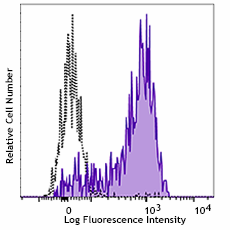
-

Human peripheral blood monocytes were stained with anti-human CD163 recombinant (clone QA19A16) Alexa Fluor® 647 (filled histogram) or mouse IgG1, κ Alexa Fluor® 647 isotype control (open histogram). -

Human paraffin-embedded liver tissue slices were prepared with a standard protocol of deparaffinization and rehydration. Antigen retrieval was done with citrate buffer 1X pH 6.0 at 95°C for 40 minutes. Tissue was washed with PBS/0.05% Tween-20 twice for five minutes and blocked with 5% FBS and 0.2% gelatin for 30 minutes. Then, the tissue was stained with 10 µg/mL of anti-human CD163 recombinant (clone QA19A16) Alexa Fluor® 647 (red) at 4°C overnight. Nuclei were counterstained with DAPI (blue). The image was captured with a 10X objective.
| Cat # | Size | Price | Quantity Check Availability | Save | ||
|---|---|---|---|---|---|---|
| 364305 | 25 tests | 90€ | ||||
| 364306 | 100 tests | 244€ | ||||
CD163 is a member of the group B scavenger receptor cysteine-rich superfamily, also known as GHI/61, M130, RM3/1, p155, hemoglobin-haptoglobin complex receptor, or macrophage-associated antigen. It is a 134 kD (non-reduced)/155 kD (reduced) glycoprotein primarily expressed on macrophages, Kupffer cells, monocytes, a subset of dendritic cells, and a subset of hematopoietic stem/progenitor cells. CD163 binds to haptoglobin-hemoglobin complex and TWEAK, and plays a role in clearing hemoglobin and regulating cytokine production by macrophages. Membrane CD163 can be cleaved by metalloproteinases (MMP), resulting in a soluble form. Elevated serum level of sCD163 has been implicated in many kinds of inflammatory diseases.
Product DetailsProduct Details
- Verified Reactivity
- Human
- Antibody Type
- Recombinant
- Host Species
- Mouse
- Formulation
- Phosphate-buffered solution, pH 7.2, containing 0.09% sodium azide and BSA (origin USA)
- Preparation
- The antibody was purified by affinity chromatography and conjugated with Alexa Fluor® 647 under optimal conditions.
- Concentration
- Lot-specific (to obtain lot-specific concentration and expiration, please enter the lot number in our Certificate of Analysis online tool.)
- Storage & Handling
- The antibody solution should be stored undiluted between 2°C and 8°C, and protected from prolonged exposure to light. Do not freeze.
- Application
-
FC - Quality tested
IHC-P - Verified
- Recommended Usage
-
Each lot of this antibody is quality control tested by immunofluorescent staining with flow cytometric analysis. For flow cytometric staining, the suggested use of this reagent is 5 µL per million cells in 100 µL staining volume or 5 µL per 100 µL of whole blood. For immunohistochemistry, a concentration range of 5 - 10 µg/mL is suggested. It is recommended that the reagent be titrated for optimal performance for each application.
* Alexa Fluor® 647 has a maximum emission of 668 nm when it is excited at 633 nm / 635 nm.
Alexa Fluor® and Pacific Blue™ are trademarks of Life Technologies Corporation.
View full statement regarding label licenses - Excitation Laser
-
Red Laser (633 nm)
- RRID
-
AB_2922575 (BioLegend Cat. No. 364305)
AB_2922575 (BioLegend Cat. No. 364306)
Antigen Details
- Structure
- 134 kD (non-reduced)/155 kD (reduced) glycoprotein, scavenger receptor superfamily
- Distribution
-
Monocytes, macrophages, Kuffer cells, subset of dendritic cells, subset of hematopoietic stem/progenitor cells
- Function
- Clearance of haptoglobin-hemoglobin complex, regulation of cytokine production by macrophages
- Ligand/Receptor
- Haptoglobin-hemoglobin complex, TWEAK
- Antigen References
-
- Roth J, et al. 1994. Transolantation. 57:127
- Van den Heuvel MM, et al.1999. J Leukoc Biol. 66:858
- Sulahian TH, et al. 2000. Cytokines. 12:1312
- Fabriek BO, et al. 2007. J Neuroimmunol. 187:179
- Gene ID
- 9332 View all products for this Gene ID
- UniProt
- View information about CD163 on UniProt.org
Related Pages & Pathways
Pages
Related FAQs
Other Formats
View All CD163 Reagents Request Custom Conjugation| Description | Clone | Applications |
|---|---|---|
| Purified anti-human CD163 Recombinant Antibody | QA19A16 | FC,IHC-P,SB |
| Alexa Fluor® 594 anti-human CD163 Recombinant Antibody | QA19A16 | IHC-P |
| Alexa Fluor® 647 anti-human CD163 Recombinant Antibody | QA19A16 | FC,IHC-P |
| TotalSeq™-Bn1307 anti-human CD163 Recombinant Antibody | QA19A16 | SB |
Compare Data Across All Formats
This data display is provided for general comparisons between formats.
Your actual data may vary due to variations in samples, target cells, instruments and their settings, staining conditions, and other factors.
If you need assistance with selecting the best format contact our expert technical support team.
-
Purified anti-human CD163 Recombinant Antibody
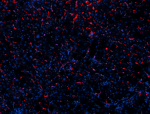
Human paraffin-embedded liver tissue slices were prepared wi... 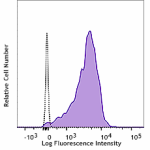
Human lysed washed blood stained with CD163 (clone QA19A16) ... 
SeqIF™ (sequential immunofluorescence) staining on COMET™ of... -
Alexa Fluor® 594 anti-human CD163 Recombinant Antibody
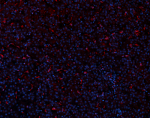
Human paraffin-embedded liver tissue slices were prepared wi... -
Alexa Fluor® 647 anti-human CD163 Recombinant Antibody
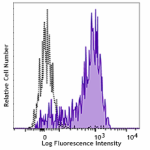
Human peripheral blood monocytes were stained with anti-huma... 
Human paraffin-embedded liver tissue slices were prepared wi... -
TotalSeq™-Bn1307 anti-human CD163 Recombinant Antibody
 Login / Register
Login / Register 













Follow Us